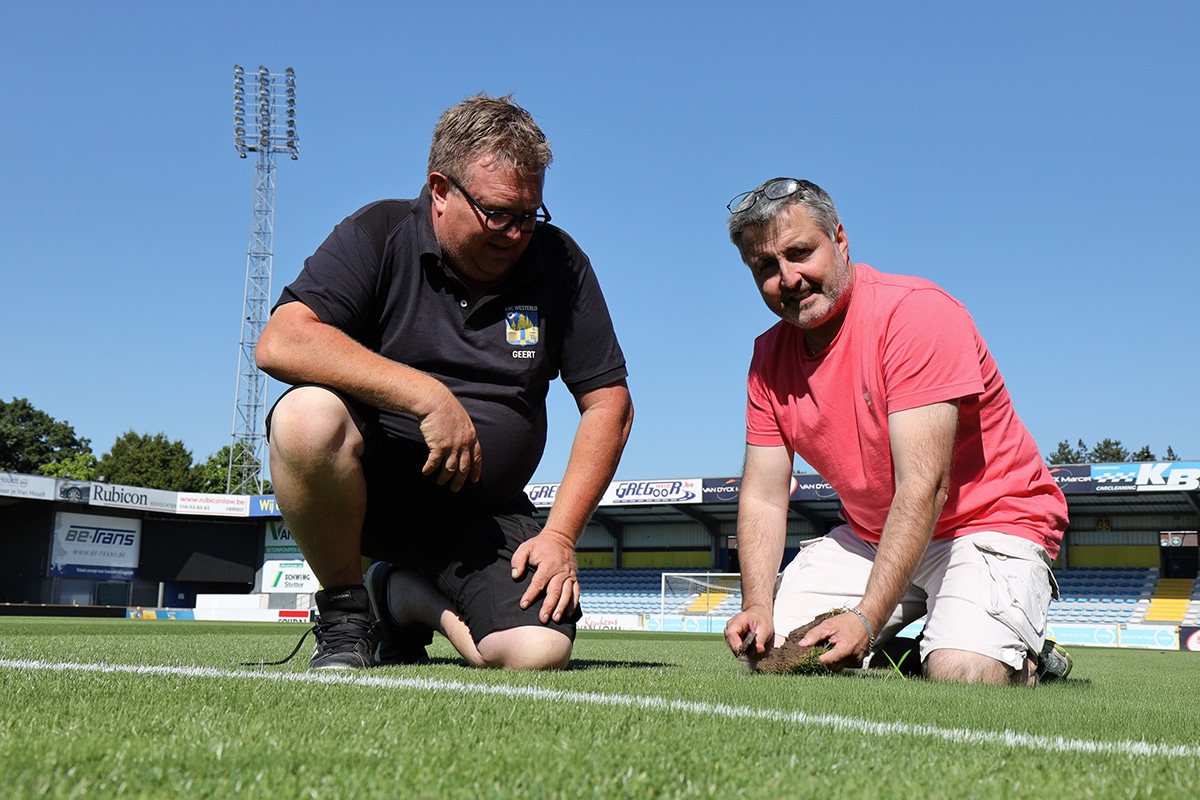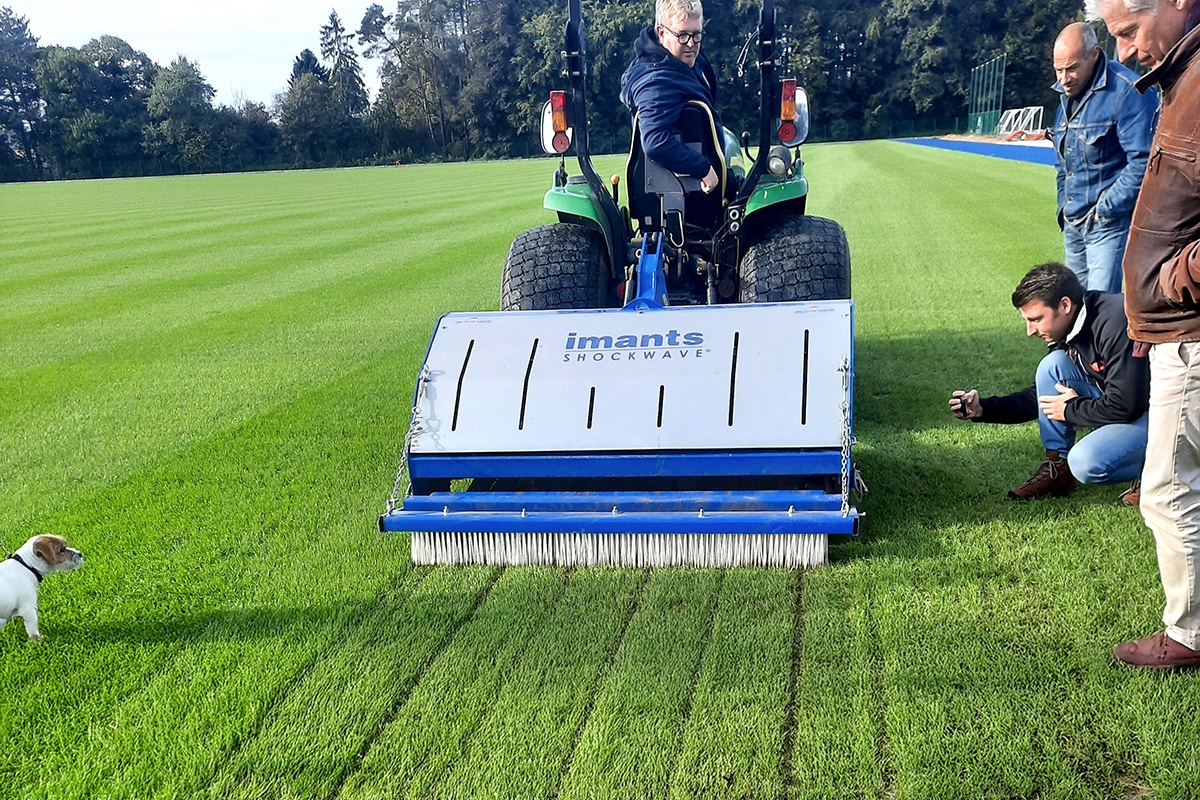
Natural, biological or physicochemical? The truth about swimming pond systems
In this article, we summarize the main systems, and place them in a logical order. From the 100% natural swimming pond to the physicochemically cleaned pool.
Text Guido Lurquin MSc & ir. Stijn Wulleman | Image Distri Pond
Natural swimming pond
In natural swimming ponds, nothing is added to the water. Filtering is done through large swamp beds filled with aquatic plants. There are different systems for this.
Downflow swamp bed
The oldest system used in natural swimming ponds is that with the downflow principle. Here the water is biologically purified from top to bottom by the plants and a layer of substrate.
Ideally, the entrance to the marsh bed area should be on the northeast side of the swimming pond. In that case, the prevailing southwest winds actually help carry the dirt particles to the marsh bed. All pollutants remain in the system there and are processed by nature.
The energy consumption of this system is very low and the marsh area forms an interesting pond biotope. Therefore, it is the most ecological variant of the swimming pond.

Upflow swamp bed
When more pollution is expected from the environment - near large trees, roads or industry, for example - and one wants to avoid clogging the marsh bed, the upflow principle is used. Here the water moves in the opposite direction, from bottom to top, and first passes through an arch sieve or mechanical pre-filter. This ensures that already part of the pollution is removed from the water, and then nature does the rest.
The energy consumption of this system remains limited, and again the plant zone forms an interesting pond habitat. Because the marsh bed is protected from pollution, it will last longer.
Multi-chamber filter with swamp zone
In the combination of a multi-chamber filter with swamp bed, the water moves laterally or vertically through the filter bed with plants. The water flows out of the swimming zone via skimmers and then passes through a multi-chamber filter composed of successive filter chambers with various filter media, from coarse to fine. A pump sends the pre-filtered water further through the swamp filter zone with plants.
Even with this solution, energy consumption remains limited and the plant zone forms an interesting pond biotope. Before the water flows through the marsh bed, much of the pollution is already filtered out.

Biological swimming pond
In biological swim ponds, the mechanical and biological processes are accelerated to allow efficient filtration with smaller volumes. This is done through metered additions of minerals and bacteria, and can be partially automated. There is no swamp bed zone.
For example, the combination of a drum filter with a moving bed and a UV filter creates an efficient mechanical-bacteriological filter. Even very small solid dirt particles are thereby immediately removed from the
water caught.
This system is very compact, but is in a higher price range. Follow-up can be done easily by using Aquatic Science's Spintouch water analysis.
Physicochemical filtration
In physicochemically filtered swimming ponds, filtration is done less naturally, and the water is disinfected using hydrolysis and UV radiation. There is an important difference between physicochemical filtration without or with the addition of salt.
Without addition of salt
No salt is intentionally added in this system; however, copper ionization is used, combined with pH control. A marsh bed with plants provides residue consumption and a natural appearance. To limit algae growth, an additional phosphate filter is strongly recommended.
In properly functioning systems, concentrations are so low that they do not pose health risks to bathers, although frequent measurement of copper levels is recommended.
The technology of this system is set up in a gazebo or technical room. The system is in a higher price range.

With the addition of salt
A physicochemically controlled bath with the addition of salt goes a step further. In this case, disinfection is deliberately chosen. In fact, because salt is added to the water, there is low conductivity salt electrolysis with formation of chlorine. Consequently, this type of bath is not suitable for fish or plants, and thus no swamp zone or plant filter can be integrated. In short, this is no longer a swimming pond, but a swimming pool. Many so-called "hybrid pools" also fall into this category.
The use of salt electrolysis requires some attention to the materials used. For example, EPDM or TPO water seals can be affected and it is better to use stainless steel 304 instead of stainless steel 316.
The technology of this system is set up in a gazebo or technical room.
Biofilm
In swimming ponds, the presence of a biofilm on the walls is impossible to rule out. More than that, this biofilm is absolutely necessary for the proper functioning of the natural system.
Heating
In principle, all systems allow some additional heating, although it is recommended not to overdo it. It is better to limit heat losses as much as possible, for example, by using HeatCover. This liquid and invisible cover reduces evaporation and heat loss, without disturbing the beautiful and natural appearance of the pond.




